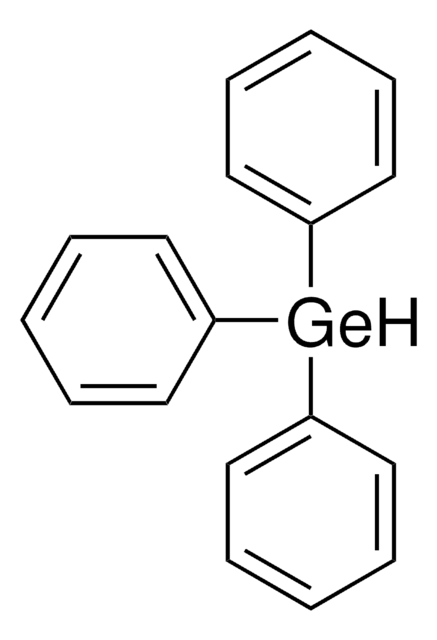906026
Germanane
Synonym(s):
Germanium hydride, Germanium monohydride, Germylidyne
Sign Into View Organizational & Contract Pricing
All Photos(2)
About This Item
Empirical Formula (Hill Notation):
GeH
CAS Number:
Molecular Weight:
73.65
MDL number:
UNSPSC Code:
12352303
NACRES:
NA.23
Recommended Products
form
powder
SMILES string
[GeH4]
InChI
1S/GeH/h1H
InChI key
ROUHNNRKLNITEM-UHFFFAOYSA-N
Related Categories
General description
Germanane (GeH) is a 2D graphane analog with a direct band gap of 1.6 eV and electron mobility of 18000 cm2V-1s-1. It is a hydrogen terminated germanium (Ge) which can be synthesized by the topotactic deintercalation of CaGe2 crystals. Its crystal structure contains hexagonal Ge lattice with hydrogen atoms that are covalently attached to every Ge atom.
Application
GeH is a van der Waals material that can be used in a variety of applications such as electronic, optoelectronic, sensing and energy conversion.
Storage Class Code
11 - Combustible Solids
WGK
WGK 3
Flash Point(F)
Not applicable
Flash Point(C)
Not applicable
Certificates of Analysis (COA)
Search for Certificates of Analysis (COA) by entering the products Lot/Batch Number. Lot and Batch Numbers can be found on a product’s label following the words ‘Lot’ or ‘Batch’.
Already Own This Product?
Find documentation for the products that you have recently purchased in the Document Library.
The structure and amorphization of germanane
Jiang S, et al.
Journal of Material Chemistry C, 2(17), 3185-3188 (2014)
Large area epitaxial germanane for electronic devices
Amamou W, et al.
2d materials, 2(3), 035012-035012 (2015)
Electronic properties of germanane field-effect transistors
Madhushankar BN, et al.
2d materials, 4(2), 021009-021009 (2017)
Elisabeth Bianco et al.
ACS nano, 7(5), 4414-4421 (2013-03-20)
Graphene's success has shown not only that it is possible to create stable, single-atom-thick sheets from a crystalline solid but that these materials have fundamentally different properties than the parent material. We have synthesized for the first time, millimeter-scale crystals
A first principles method to simulate electron mobilities in 2D materials.
Restrepo O D,et al
New Journal of Physics, 16, 105009-105009 (2014)
Our team of scientists has experience in all areas of research including Life Science, Material Science, Chemical Synthesis, Chromatography, Analytical and many others.
Contact Technical Service







